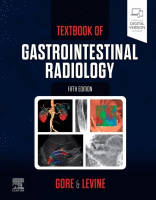Physical Address
304 North Cardinal St.
Dorchester Center, MA 02124

The liver has a unique, dual blood supply in which 25% of the flow comes from the hepatic artery and 75% through the portal vein. There is an inverse relationship between these two blood supplies. If portal flow decreases, arterial…

The liver has quite accurately been called the custodian of the milieu intérieur, and is vulnerable to a variety of metabolic, vascular, toxic, infectious, and neoplastic insults. Diffuse liver disease can be diagnostically challenging because of nonspecific and overlapping clinical…

Technologic advances have significantly enhanced the role of radiology in the detection, characterization, and management of focal infectious diseases of the liver. Today, all cross-sectional techniques allow highly accurate detection of focal hepatic infections. Computed tomography (CT) is particularly helpful…

Primary malignant neoplasms of the liver are classified by the cell of origin ( Box 54.1 ). Secondary malignant liver tumors are metastases and lymphomas. Overall, metastases are the most frequent malignant tumors of the liver, except in patients with…

Hemangioma Hemangioma is the most common benign tumor of the liver, with a reported incidence ranging from 1% to 20% ( Table 53.1 ). , Hemangiomas occur primarily in women (female-to-male ratio of 5:1). Although hemangiomas may be present at…

The two most common surgical procedures of the biliary tract likely to be encountered in day-to-day practice are laparoscopic cholecystectomy (LC) and biliary-enteric anastomosis. Specifically, given the high prevalence of cholelithiasis or gallstones in the United States, with roughly 20…

Primary Sclerosing Cholangitis EPIDEMIOLOGY AND CLINICAL FINDINGS Primary sclerosing cholangitis (PSC) is a chronic cholestatic liver disease of unknown cause. This disease has a typical onset from 20 to 30 years of age but may begin in childhood; it has…

Biliary tract neoplasms include tumors in the bile ducts and gallbladder. Although they are infrequent, most neoplasms that arise from the gallbladder and bile ducts are malignant, resulting in poor prognosis. Gallbladder carcinoma is the seventh most common malignancy of…

This chapter reviews the imaging findings of gallbladder and biliary calculi and the role of computed tomography (CT), ultrasound, and magnetic imaging (MRI) in the assessment of these disorders. The chapter concludes with a discussion of the spectrum of noninflammatory…

Since the first clinical application of magnetic resonance cholangiopancreatography (MRCP) in the early 1990s, MRCP has evolved from a technique with questionable potential for imaging of the biliary tract and pancreatic duct to one that is now recognized as a…